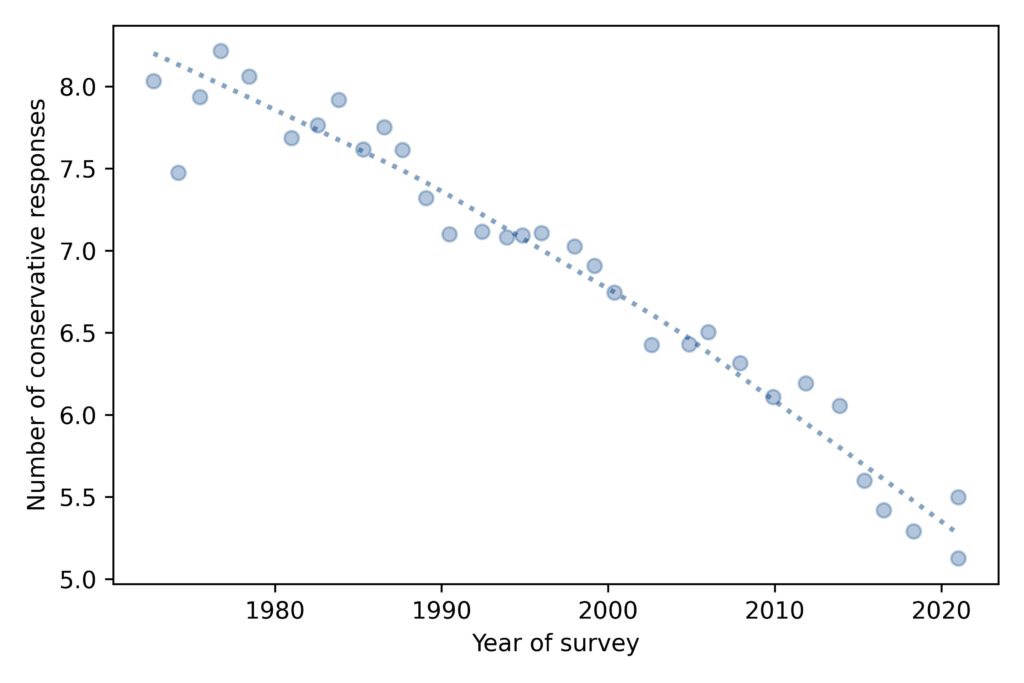Support for Gun Control is Still Declining
In 2019 I presented a talk at SciPy where I showed that support for gun control has been declining in the U.S. since about 1999. And, contrary to what many people believe, it is lowest among millennials and Gen Z.
Those results were based on data from the General Social Survey up to 2018. Now that the data from 2021 is available, I’ve run the same analysis and I can report:
- Support for gun control has continued to decline, and
- Among young adults it has reached a new low.
The following figure shows the fraction of GSS respondents who said that they would favor “a law which would require a person to obtain a police permit before he or she could buy a gun.”

Support for this form of gun control increased between 1972 and 1999, and has been decreasing ever since.
The following figure shows the results from the same question plotted over year of birth.

People born between 1890 and 1970 supported gun control at about the same level. More recent generations — including millennials and Gen Z — are substantially less likely to support gun control.





